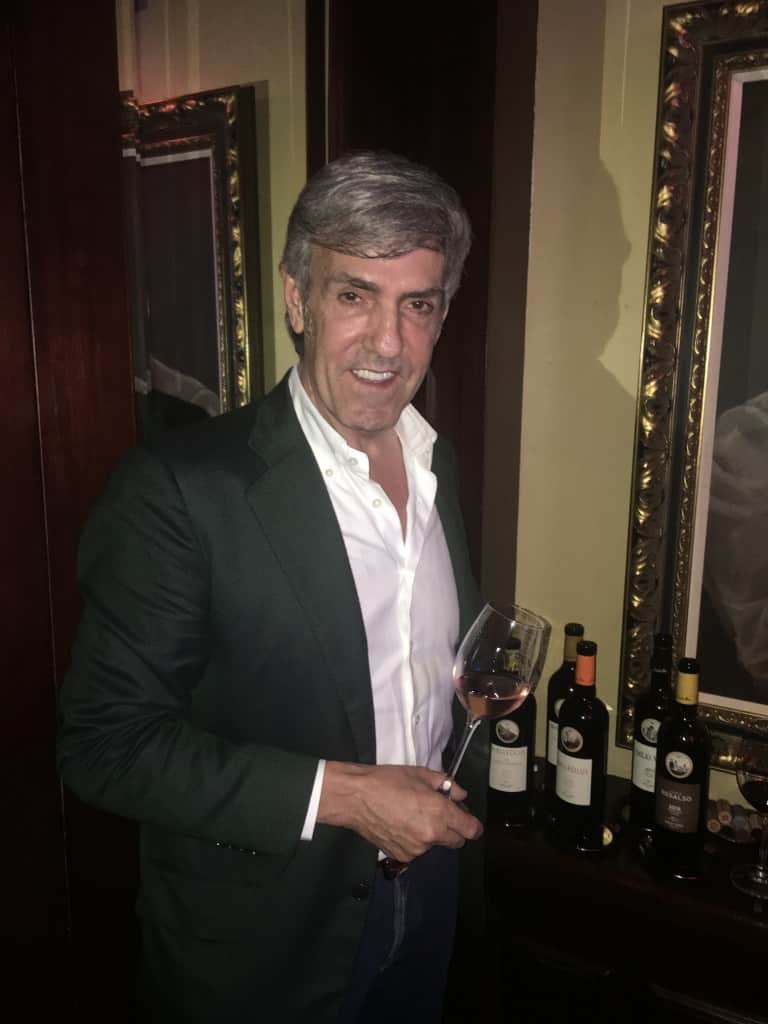History, Family, Evolution and Building a Legacy: A Conversation with Jose Moro
 It was a story of family. A story of evolution. A story of balancing the heritage of the past but balancing that tradition with innovation to take the wines forward. It was also the story of what happens when a generation decides to put a stake in the ground, plant an exclusive clone of Tinto Fino, evolve it in every wine they make and become singularly focused on the terroir and what the land can do. Last week, I had the chance to sit down with Jose Moro, President of Bodegas Emilio Moro Winery, to hear the story, taste the wines and experience the legacy of the family.
It was a story of family. A story of evolution. A story of balancing the heritage of the past but balancing that tradition with innovation to take the wines forward. It was also the story of what happens when a generation decides to put a stake in the ground, plant an exclusive clone of Tinto Fino, evolve it in every wine they make and become singularly focused on the terroir and what the land can do. Last week, I had the chance to sit down with Jose Moro, President of Bodegas Emilio Moro Winery, to hear the story, taste the wines and experience the legacy of the family.
We gathered at Pappa Bros. Steakhouse for a specially paired, four course wine dinner matched with five wines that showcased evolution in a glass. Moro was so excited about the beauty of the new 2015 wines and called it out as “the best vintage ever.” “The size of the berries, the rich aromatics of the wines and the ideal conditions in the vineyards makes this year an optimal year,” he said.
Bodegas Emilio Moro is all about Ribera del Duero’s wine but also about the fourth generation of family members who will keep the legacy going. “Every year as we harvest the wines, we live in these incredible moments, said Moro.” “Wine is the one basic element and driving force that I know.”
A little history about the Moro family. In 1932, Emilio Moro was born in Penafiel, the wine center of Ribera del Duero. Moro developed vineyards and went down the path of producing bulk wine. In 1959, Moro’s son was born – also named Emilio – and was readily eager to follow in the footsteps of his family. In the 80s’, there was a concerted decision to change from quality over quantity and focus on the Tinto Fino clone.
Spain is the third largest wine producing region, has world’s largest compilation of the extension of vines and Ribera del Duero has almost 2,000 hours of sun per year. The Ribera del Duero was named a wine denomination of origin in 1925 and today Spain has more than 70 of them. The terroir is very high and a mix of chalk, clay and stone. “History generates the quality of wines that come from great wines combined with a selection of environment, history and location.” And the critics agree with the Wine Enthusiast naming the region as the best in 2012.
Many of these vines have quite the impressive resume and the family is dedicated to three core values – tradition, innovation and corporate social responsibility. Moro talked about how, “history guarantees the quality of the wines and how great wines come out of its environment, location and history.”
Speaking of innovation, Moro was one of the first to test out drones in the vineyard. This technology provides him with specific information for every single clone. You also see his passion for helping others. The family’s Emilio Moro Foundation focuses on a wide variety of projects that give back to several communities and uses the need for clean water as its common denominator.
We started with a delightful rose as an aperitif that I adored. It was made of tempranillo grapes and it is delightful. Crisp, mineral, balanced, fruit forward and delicious.
The tasting menu and notes are here so you can what happened:
First Course – Truffled Beef Carpaccio over truffled potato with roasted garlic aioli with the 2016 Finca Resalso. It comes from the family’s youngest vineyards and is a very nice young wine with lots of berry that is drinkable today.
We also got to sample the 2015 Emilio Moro Tempranillo. This is where we began to see the evolution of complexity, depth and fruit. It was delicious.
Second Course – Grilled Lamb Chops marinated with olive oil, garlic and herbs served with roasted wild mushrooms combined with the 2014 Malleolus. These vineyards were 25 to 75 years old and the complexity of the wines continued to evolve. In this, I tasted balsamic, berry, cigar and spice. It rocked with the lamb chops.
Third Course – Dry Aged Strip Loin with au gratin potatoes with the 2011 Malleolus de Sanchomartin, a single vintage wine that was so layered and had so much depth, elegance and structure. I loved this wine with its big flavors of balsamic, spice and berry. It was a match made in heaven with the aged steak and I found myself continuing to find nuances as the wine opened.
Our dessert finale was a Chocolate Turtle Pie (one could have fed the entire table) paired with 2011 Malleolus de Valderramiro. I tasted black fruit, licorice and this wine also had a power to it along with a nice structure. It’s dense but drinkable with lots of structure.
After our dinner and a few slide shows, Jose told us that 80 percent of the wine produced stays in Spain. We are missing out in America – actively seek these out when you can and experience the evolution and promise of Tempranillo and Tinta Fino.
Powered byTwitter









